Mike Bloomberg Needs to Become the Koch Brothers of Gun Control
Someone else can worry about the terminals, Mike

Earlier this year, there was a lot of speculation about whether former New York City mayor Mike Bloomberg (I’m not calling him “Michael R.” and you can’t make me) would run for president as a third-party candidate. In March, he announced that was a risk he would not take, fearing that his candidacy could splinter votes among non-Republicans, resulting in a Trump or a Cruz presidency. Oh God, remember Ted Cruz?
According to his very well designed but distractingly responsive website, since his mayorship ended in 2013, Bloomberg devoted his time to philanthropy in 2014, and returned full-time to Bloomberg LP full time in 2015. Coincidentally or not, a lot of high-profile people have left the media arm of Bloomberg since then. You could probably make some kind of argument about how and whether Bloomberg the person should be running Bloomberg the company, but I’ll leave that to the media pundits. As much as he could do for a private data and media company, there’s a lot more he can do for a public democracy full of mostly reasonable people who want their citizens to stop shooting each other.
In 2006, together with the late Boston Mayor Thomas Menino, Bloomberg founded a coalition called Mayors Against Illegal Guns, which now claims over a thousand current and former mayors who advocate for gun-control laws. In 2014, very shortly after he left office, Bloomberg pledged to spend $50 million to challenge the N.R.A., his biggest and boldest move yet. He created an umbrella group, expanding the focus from moms and mayors to citizens everywhere, with an organization with the irrefutable name Everytown for Gun Safety. But then what?
A few weeks ago after the Orlando massacre and a fifteen-hour Democratic filibuster on the floor of Congress, Slate’s Leon Neyfakh checked in with Bloomberg’s crusade. (Smartasses may here want to point out that the filibuster was right in spirit but wrong in letter, and to that I say, “Yes, dear. It’s not like Congress works anyhow.”) Neyfakh writes:
More than two years after Everytown’s launch, in the wake of the worst mass shooting in modern American history, it’s fair to wonder what Bloomberg and the organization he started have been up to — and what they have to show for their efforts. With this latest act of violence, and the latest squelching of reform in Congress, it’s easy to assume Everytown has been a failure, and to worry about what that means for the future of the gun debate. In fact, Bloomberg’s organization is at the center of what can legitimately be called a new American gun control movement — one that experts say has already begun to demonstrate, in the years since Newtown, that the NRA is not the invincible force many assume it to be.
He goes on to explain that Everytown’s approach has been slow and steady, from political image (it shouldn’t be a career-killer to be pro-gun control) to political victories (elect Democrats in favor of gun control, passing background-check legislation at the state level). So what’s left? First, the N.R.A. is huge, like ten-times-the-financial-resources huge. But it’s also demographically at odds with reality: fewer households own guns today than in the past half-century, and the overwhelming majority of Americans—even N.R.A. members—support gun control measures.
If there’s anything I learned from working at The New Yorker for seven years, it’s that the only way to get anything done in this country is for older white billionaires to funnel disgusting amounts of money into political action committees with blandly uptopian names. Also, Jane Mayer is a badass. So, without getting into Second Amendment territory, which is its own can of laser-eyed, improvised explosive worms, the best recourse we have is money. Ideally, someone else’s money—someone who has a lot of it.
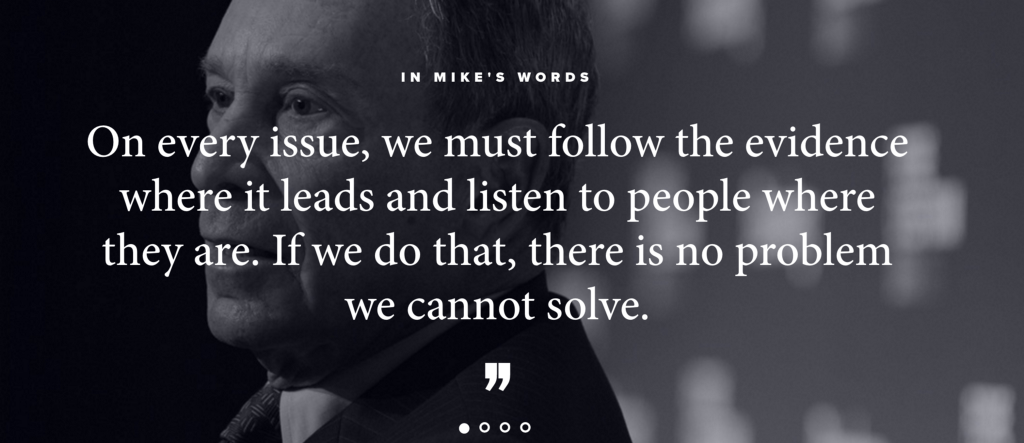
It is generally considered uncouth to recommend that people throw money at a problem. It feels unfair: most people—particularly the ones who need the help and protection that money can buy—can’t afford to give. It feels kind of gross, like buying friends or influencing people you wouldn’t otherwise have access to if you didn’t have dollar bills coming out of your ears. It feels generally wrong, because people should be willing to help each other without financial incentive. But it’s too late to stick up our noses at the only thing that works.
Remember the 2008 election? It was a huge victory for small donors, except it totally wasn’t because that’s kind of a feel-good myth. Medium and large donors will always count more, because that’s how big numbers work. If you feel like you want to do something, you should! Donate to Brady, donate to Everytown, donate to Gabby Giffords’s P.A.C. But between you and me and everyone we know, Mike Bloomberg (I’m assuming one of you knows Mike and has sent this to him, great, thanks) is still the richest person who can get the most done when it comes to gun control.
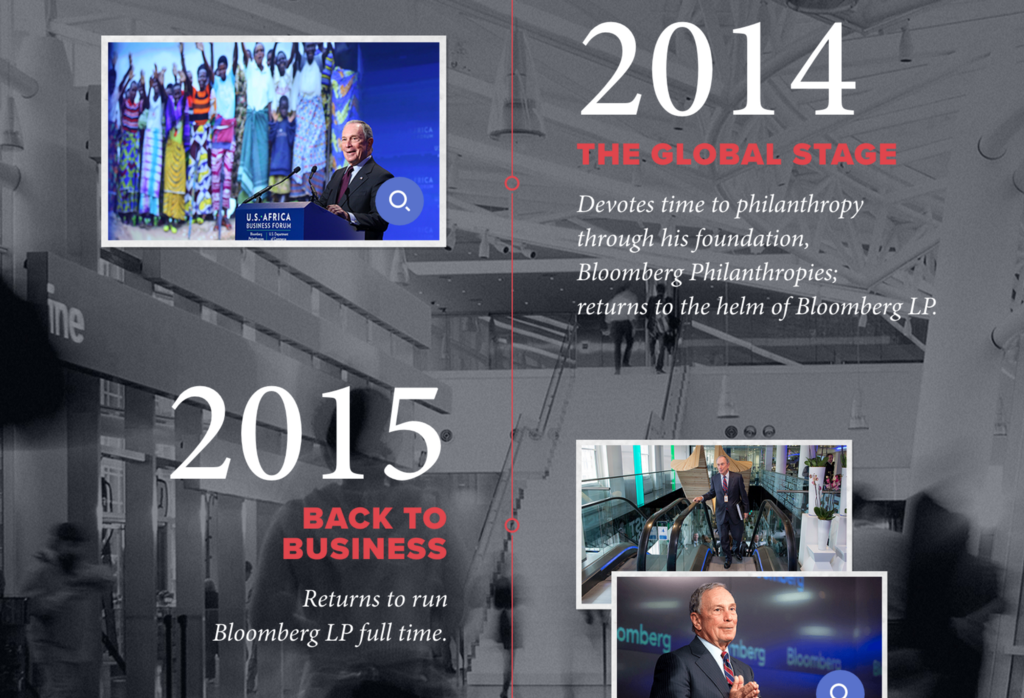
I realize that Mike is a busy man with lots of obligations and political speeches to give and companies to chair and boards to serve on, but frankly I don’t think anyone would be offended if he picked just this one thing and dedicated the rest of his career to it. (There are lots of other people who can run a big company just fine. You can’t do it all, Mike!)
Follow the Kochs’ lead and try systematically swaying elections with money, or maybe create your own spy network to gain a competitive advantage against the N.R.A. If all else fails, just fund the hell out of a bunch of different organizations, none of which can really be traced back to you except over the course of years of deep reporting, that push the country in the direction of better gun control. Everytown has done a lot, but it’s time for Mike to turbocharge the gun-control movement. It’s time to fight fire with money.
I Survived Genesis
Where’s my medal?
Whenever I try to tell younger people what America was like in the bygone days of my childhood I explain, in a way which I hope provides the clearest possible contrast, that the nation was so innocent and fragile that Madonna was a constant source of controversy. You would not even believe how much trouser-soaking and jewelry-grasping there was over this video.
And that was in 1989, the year Taylor Swift was born. It was a very different country back then. How different? There was a year that Genesis was inescapable.
Genesis skyrocketed into the pop stratosphere with the release of the smash album Invisible Touch. From 1986 to 1987, that multi-platinum record yielded five Billboard top 10 singles: the title track, “Throwing It All Away,” “Land of Confusion,” “Tonight, Tonight, Tonight” and “In Too Deep.”
EVERY FUCKING TIME you turned on MTV “Land of Confusion” was playing.
Those of us with living memories of that period will shudder and move on, but you kids today should read this bit of historical perspective and remind yourself that even though everything is falling apart around you and your emotional existence is mediated through a tiny computer you hold in your hand at every second because without it you no longer know who you are, you are lucky that you did not live in an era where this was what you could not get away from.
It’s no wonder us old people look so sad and tired all the time. We’re trying to outrun the trauma.
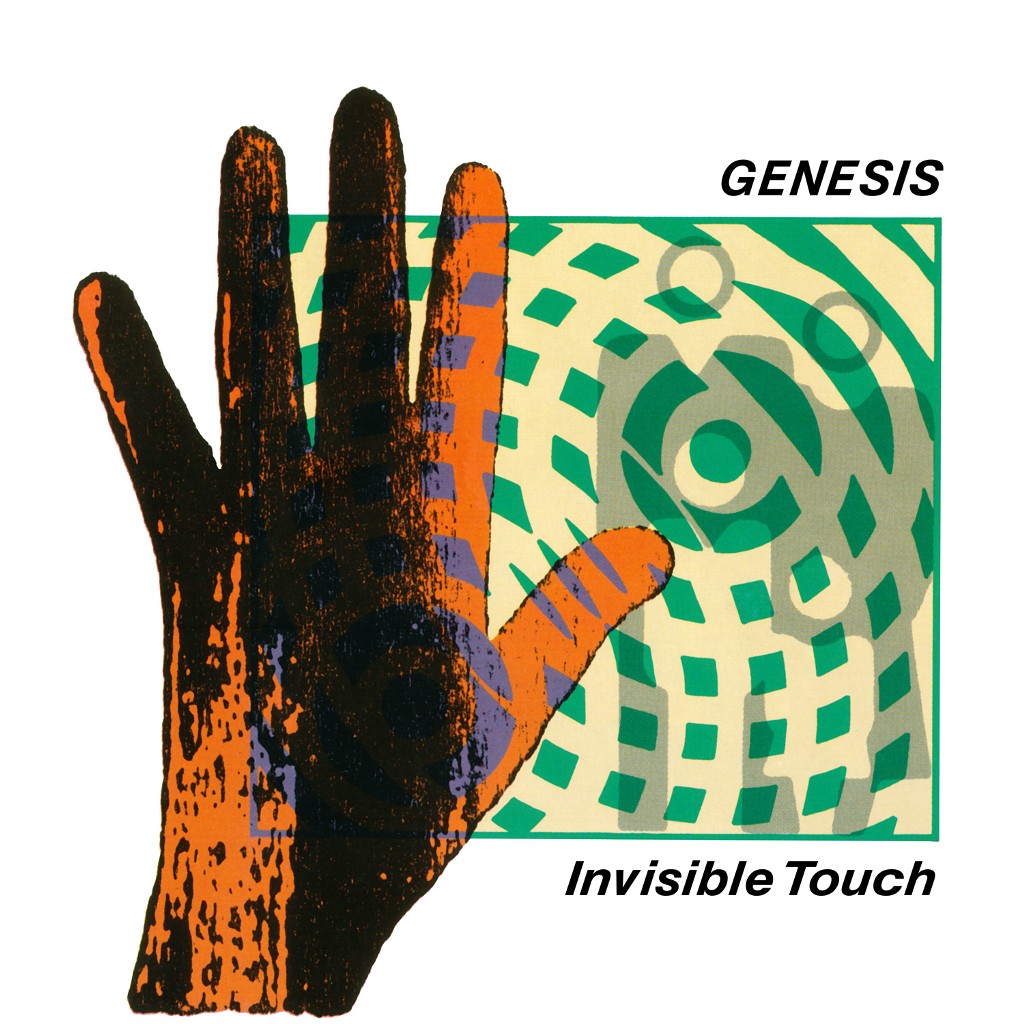
Alan Vega, 1938-2016

“Alan Vega, the singer in the minimalist, proto-punk, proto-electro, proto-industrial two-man band Suicide and a prolific musician and visual artist on his own, died on Saturday.”
Here’s Henry Rollins’ announcement of Vega’s passing over the weekend. Here are a couple of covers that have come out in the wake of the news.
Win Butler, “Dream Baby” [via]
MGMT, “Goodbye Darling” [via]
Vega was 78.
New York City, July 14, 2016

★★★★ Bodies dragged their way through the saturated air, as now and then a drop fell from the gloomy sky. After a few hours in the cold office, the air on the sidewalk was like a warm compress on the stiffened knees. A moving van went by with its windows down, but a string of cabs all had their windows up. The afternoon went from dim to dark, quickly, and sidewalk vendors hurried to throw covers over their merchandise. In an instant, people were sprinting down the avenue, chased by onrushing white waves of rain. Coils of rain writhed in headlights. A Citibike lay across the entry of the J. Crew, where its rider had taken refuge. Lightning flickered; the puddle of floodwater filled most of the curb lane. Occasionally someone would dart out into the deluge, hopelessly signaling for a taxi, only to retreat. People gathered in office windows to watch the desperation and misery playing out below. The storm subsided enough to lure a few people out, and then the wind whipped up and the heavier rain sent them scattering again. A man lugging an instrument case lost and regained a flip-flop. Lightning was still flashing even as sunlight began to shine on a water tower on a rooftop up the avenue. Shortly there was full sun, even as a passing vehicle threw water on the sidewalk. A cascade continued to pour through the roof onto the 18th Street 1 platform. Half an hour later, uptown, there was not a cloud to be seen in the sky.
Why Won't the Republic of Azerbaijan Blacklist Me?
The country keeps out visitors for two offenses; I committed both.

For at least the past decade, the Republic of Azerbaijan has accumulated a list of hundreds of people who have been declared personae non gratae, forbidden to step foot in the country. The “Arzuolunmaz Şəxslərin Siyahısı” or “List of Undesirable People,” can be found on the Azerbaijani Ministry of Foreign Affairs website. The list provides the name, country of origin, position, and often a photo of the offender, and it includes members of numerous parliaments, journalists from major newspapers, the Spanish opera singer Montserrat Caballé, and even two NASA astronauts.
What the members of this varied group all have in common is having visited a small mountainous region seemingly at the edge of the world. Known as Nagorno-Karabakh or the “Black Garden,” it is a disputed territory populated by ethnic Armenians. It has been de facto independent for the past twenty-five years, but the land on Azerbaijan’s border with Armenia is at the heart of a fierce conflict, and is de jure still part of Azerbaijan.

Azerbaijan, an exotic-sounding name to Western ears, sounds like the very embodiment of a post-Soviet outpost one imagines exists, but with no idea exactly where. There are substantive reasons to know Azerbaijan though: it’s an oil and gas producing nation with almost continuous headline-grabbing repression of journalists and civil society. It gained recent notoriety for the imprisonment and recent release of Khadija Ismayilova, a journalist whose cause was taken up by human rights lawyer Amal Clooney.
Last month, the Formula 1 Grand Prix of Europe ran through the streets of Azerbaijan’s capital, Baku. Sports fans also might have noticed advertisements for Azerbaijan’s national oil company SOCAR, at this summer’s Euro 2016 football championships. The country is also a sponsor of the Atletico Madrid football team. How can a place that aspires to be a recognized as a global player have such a capricious approach to its visitors?
Azerbaijan considers visiting Karabakh without its permission (which it would not grant) to be a violation of international law. The sentence for this crime is a permanent ban from entering Azerbaijan. In addition to the official blacklist, there is a more sinister, unofficial policy based on race alone—this unwritten and unlegislated secondary blacklist applies to anyone with an Armenian last name, or a name that merely sounds Armenian. There have been abrupt deportations of people who arrived in Azerbaijan as part of groups, such as bands, sports teams, journalists, and diplomatic delegations all because of their last names. It has become so commonplace that the U.S. State Department has a warning to citizens trying to get a visa to Azerbaijan, especially if one has also been to Armenia:
U.S. citizens of Armenian ancestry — or even those with Armenian last names — have had their visa applications denied by the Government of Azerbaijan on the grounds that their safety cannot be guaranteed. In 2013, a traveler with an Armenian visa in his passport had his Azerbaijani visa application refused to be accepted for processing.
Not every person of Armenian descent has an Armenian name, and some with Armenian last names have no connection to their heritage, or were married or adopted by an Armenian. This draconian policy also makes cross-cultural exchange and interaction between Armenians and Azerbaijanis almost impossible, something vital to Track II diplomacy in any peace process. These days, most Armenians and Azerbaijanis under age 40 only know each other as an enemy on the other side of a gun.

When the Soviets took over the region after World War I, they at first included Karabakh in the Armenian SSR, and then made it an autonomous region within Azerbaijan SSR instead. However, the Armenian-Azerbaijani border was internal, allowing for free movement and less practical significance. That changed with the Union’s fall in 1991, when the often arbitrarily drawn borders between republics became international boundaries. After seventy years, the conflict over Karabakh exploded anew.
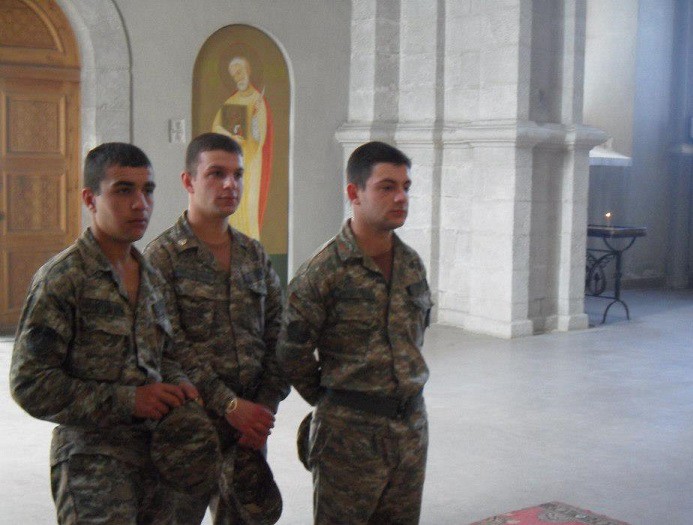
After years of conflict and bloodshed, both sides, along with the unrecognized Republic of Nagorno Karabakh , signed a ceasefire in 1994. It left Armenians in control of most of the region, along with a buffer zone from which hundreds of thousands of Azerbaijanis were displaced. This ceasefire was intended to lay the foundation for peace talks. After several failed attempts at negotiation, Armenian and Azerbaijani soldiers still stare (and sometimes shoot) at each other from bunkers exactly where the fighting halted over twenty years ago.
The institutionalized stigma against Armenians severely undercuts the assertion that Karabakh Armenians would be embraced back into Azerbaijan as welcome and free citizens. Armenia has every reason to be just as spiteful, but it is not: There are many Iranian Azeris in the transport industry, driving Armenia’s roads, and numerous citizens from another historic rival and closest ally of Azerbaijan, Turkey, are welcomed as visitors despite the Turkish blockade of the Armenian border. It is in fact possible to balance security concerns without banning entire peoples.
The blacklist also includes participants in a 2013 research trip by the Johns Hopkins University School of Advanced International Studies (SAIS). Sixteen students and their two professors, represented on the list with photos the Foreign Ministry apparently found on social media, were far from a rogue group of international lawbreakers. They were on one of SAIS’s periodic “Conflict Management Field Trips.” While they were in Azerbaijan, the students met with Elmar Mammadyarov, the republic’s Foreign Minister, and the same man who would later blacklist them.
It is in Azerbaijan’s own interest to recognize the ways in which the Blacklist sabotages its dreams of advancement on the world stage. Mary E. Boyer, one of the blacklisted students, sees her place on the list as a public reminder of the senselessness of the policy. “I am proud to be on the list,” she said, “as gathering information, engaging in cultural exchanges and economic development should be encouraged. By placing non-criminal people on the Blacklist, Azerbaijan is reinforcing the idea that it lacks openness to pursuing a peaceful resolution.”

In September of 2012, I made a trip to Stepanakert, the vibrant capital of Karabakh. Thanks to the lack of publicity surrounding my visit, I have thus far avoided an ignominious spot on the Blacklist, but I deserve it, don’t I? My Armenian last name is already enough to have me unofficially banned without even having visited Karabakh (despite the fact my family has been in the United States now for over a hundred years). If Azerbaijan is serious about blacklisting every visitor to Karabakh, and not just engaged in a long-running counter-productive publicity stunt cherry-picking those who make for good propaganda, they should add me and every other person who can prove having visited Karabakh with no exceptions. After hearing about yet another round of additions to the list in May — this time a group of Bulgarian MPs — I decided to take a rather unorthodox step. For the sake of fairness and consistency, I petitioned Azerbaijan to blacklist me.
I tried tweeting at the Blacklist’s Twitter account, providing photographic proof of my transgression and asking if that was sufficient evidence to join the list. After telling me cryptically that “Armenians are no longer added,” when pressed, it claimed not to be an official mouthpiece for the government anyway and not to concern myself with it. Left dejected and a bit confused, I turned my quest to the Azerbaijani Embassy in Washington, D.C.
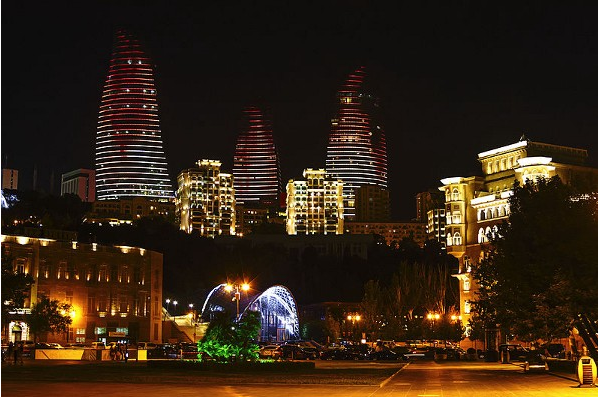
The embassy represents a nation that sees itself as cutting edge and up-and-coming, as demonstrated by Baku’s grandly futuristic architecture and its even grander plans to bring itself to the center of global attention. Azerbaijan hosted the 2012 Eurovision Song Contest and the first-ever European Olympics in 2015. Adventurous foreigners like myself have plenty of reasons to visit Azerbaijan if permitted. I made a call to the embassy and laid out my situation: an American who has visited Karabakh but who is not on the Blacklist. They told me they would call me back with answers.
I received an answer of sorts in the form of an international incident. The day after my call, an eight-year old boy from Moscow on a school trip to Baku was stopped at the airport for having an Armenian biological father. His mother said the trip had been cleared with Azerbaijani authorities beforehand, but he was still subjected to a ten-hour detention. His mother vented her frustration to Instagram in a post (since deleted) that went viral, after which the deportation order was reversed and they were allowed to enter the country. One might question the danger a young boy could have posed to Baku, but this vindictive action is better understood in context of a 2012 statement by President Ilham Aliyev that “our main enemies are Armenians of the world.” Even if they are eight years old.

After some more prompting, the embassy responded to my inquiry in a general manner, saying: “in any country, an unauthorized visit to its territory would cause legal consequences. In Azerbaijan, this results in a travel ban to Azerbaijan. This applies to all unauthorized visitors, including those of Armenian background who entered Azerbaijan illegally.” Nothing about whether I was subsequently banned. In the case of the Russian boy, who had not visited Karabakh, they countered that he was allowed into the country eventually, and that it was a procedural matter.
I’m still hoping that Armenians and Azerbaijanis can get to know each other again as more than just enemies. But that day will never arrive until obstacles like the exclusionary policies and blacklist are dispensed with. As for my own quest to get a spot on the blacklist: I’m still waiting.
Paul Sookiasian is a writer and researcher who lived in the region from 2012–2014.
Medicine Is Supposed To Taste Bad
Fruit-flavored antacids are existentially confusing

Like any human, I eat food. Sometimes too much. Not nearly enough plants. On some occasions I consume coffee, chocolate, Advil®, and beer all on the same day, which regrettable pattern calls for antacids in the short term, and histamine-2 blockers in the long term. My preferred choice of chalk tablet is Tums® Smoothies—I don’t know why; I think I tried them one day and they were, I don’t know, smoother than the ones you get that come rolled up in a coin roll? And the dispenser has weird grippy sides with finger grooves for when your tum hurts so much you can’t hold on (???). But as nice as the dispenser is, the product suffers from a pretty basic problem: what is the deal with all the flavors?
Assorted Fruit-flavored Tums® come in cherry, orange, lemon, and lime. Why???? Those are almost the same exact flavors that Skittles and Starburst and Runts come in, which is confusing because Tums® are not candy, even though a lot of people wish they were.
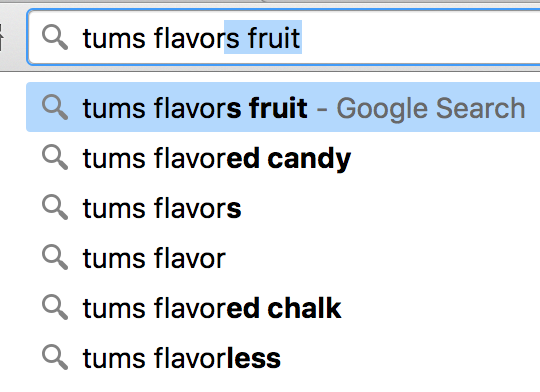
My main issue here is that everyone knows that when you impose this kind of flavor diversity on a product, you necessarily impose a hierarchy. To each her own or whatever, but we can all agree that cherry is the best and lime is the worst. This kind of thought process is unwelcome on top of a sour stomach. So you untwist the paper roll and you get an orange: okay, fine. You would have preferred cherry but you can’t win ’em all. But you tore enough paper and you can see that the next one is a lime, and you have to take it because a dosage is two tablets. I shouldn’t be thinking about this! I shouldn’t be wishing for other flavors of medicine. The which-flavor-will-I-get next game is too much on top of a tummy ache, to say nothing of the can-I-get-two-cherries-in-a-row-and-does-it-mean-he-loves-me game.
You know the expression, “A taste of your own medicine?” It’s not generally a kind one. Pills should be bitter, and hard to swallow, as the other expression goes. Medicine is supposed to taste bad, because it’s associated with unpleasantness and being sick. I know, I know, a spoonful of sugar makes the medicine go down, as Mary Poppins said, but Mary Poppins also did a lot of crazy shit like pull lamps out of her carpet bag, and in my memory she always has soot on her face.
It used to be that Tums and Rolaids came mostly in peppermint flavor, if they were flavored at all, because people have this idea that peppermint soothes your stomach, which might be true, but I think it’s mostly about the placebo effect of “cooling” your “burn.” And I’m not saying that Tums taste good exactly, but they’re trying to imitate something that does, and that is deeply confusing. A few years ago, a coworker gave me some Gaviscon tablets (original flavor, NOT cherry) and they were dis-GUS-ting. They tasted almost as bad as the acid-reflux burpy taste in my mouth. But they worked like an unpleasant charm.
Forma, "Improvisation For Flute And Piano"
It’s okay to stay silent when you don’t have anything of meaning to say.

Forma’s Physicalist is out September 23rd.
New York City, July 13, 2016

★★ The outside air hit the skin and clung there, impermeable. Down on the subway platform the stuffiness went from inert to active, squeezing out perspiration. Once again, though, the heat of the middle of the day was less than cruel. Clouds convered the majority but not the entirety of the afternoon; little ripples shimmered on the top of a long, murky gutter puddle. Saxophone and urine sent their notes floating on the cross-street atmosphere, but around the corner it was fine and tolerable. It was in the subway, coming apart from a power failure, that the worst still festered. The only 1 train, fully stuffed, had no air conditioning in the car, and by Times Square it had acquired the reek of vomit. Sweat had soaked fully through a big man’s shirt as he stood numbly in the press of the crowd, till there was nothing for it to do but begin soaking its way through the back of the adjoining stranger’s shirt, from the outside in.
How To Support Blacademics
Ellie Ade Kur’s advice for “Non-Black Faculty and Grad Students Teaching Black Faces in White Spaces”

There is no academic or teacher alive who couldn’t stand to listen to and learn from a young Black teacher, so today I’m directing you to a remarkable Facebook post by University of Toronto PhD student Ellie Ade Kur (@wannabeacademic on Twitter).
Ade Kur’s advice is practical, wise, and you should read it before you teach another class. She insists that academics support employees and staff with the same strength that we support colleagues; that we make space—literally, that we step aside—for Black voices; that we remember, always, that “Vulnerable students are the first to go.”
Because something is going badly wrong in white pedagogy. Says Ade Kur:
I don’t have all of the answers, but I do have emails from dozens of Black students looking for advice from Black teaching assistants and lecturers on what to do about anti-Black racism in classes, tutorials and office hours: professors and teaching assistants screening violent content, leaning on racist tropes, ignoring anti-Black comments, or singling out Black students to address problematic comments/opinions in the room. And when students are so upset they go through department listservs looking for Black teaching assistants and lecturers to reach out to for help, we need to talk.
Yeah, we do. So, read it, pass it on, and remember: “There is no such thing as apolitical or objective social inquiry.”
Josephine Livingstone is an academic and writer in New York.
What Happens When The Government Thinks You're Dead?
A bureaucratic horror story.

In 2009, I lived in Los Angeles. Occasionally I’d run into my upstairs neighbor, Eric Soto, near the stairs or on the front stoop. Eric was always navigating a few odd jobs to make rent, and I had just began freelancing full-time, so our conversations veered toward complaining about stress while shrugging over the “freedoms” our schedules allowed.
One day, he seemed down, and I asked him what was wrong. Eric told me he’d been declared dead by the Unemployment Office. Kind of funny at first, but the next four months of bureaucratic hell were anything but. A few months ago, I called him up and had him tell me that story again.

It started with me trying to reapply for Unemployment. The economy was bad, I was having a hard time finding work, so I was on the phone with Unemployment, and they said, “Let’s see if we can get you an extension.” I was like, great, things are finally working out. Then she said, “Your account has been red-flagged.” She said, “According to our system, you’re dead.”
I thought it was going to be resolved fairly easy. They asked for proof, so I called my dad and he sent me a copy of my birth certificate. They said that wasn’t enough, so I sent a copy of my driver’s license. Not enough. I sent a copy of my Social Security card, bills that had my address and name, my mother’s maiden name, whatever. They kept sending letters saying that’s not enough. One day, I got seven envelopes from Unemployment saying the exact same thing. Seven. Then I got a letter that said, because I was collecting unemployment during the previous months — when, according to their system, I was supposed to be dead — that I actually owed them thousands of dollars!
This was going on for months, so I was looking for help. I called my Representative. I looked into getting a lawyer, so I’d find one and drive to their office, sit and talk for an hour, and then they’d tell me the cost, and it would be astronomical. I called all these free services, but couldn’t find any to help. Meanwhile, I’m begging friends for money so I could eat, and I’m not paying rent.
Finally, Unemployment calls and says, “Okay. All we need is this one document from the Social Security Administration.” They had an office nearby. I walked there, explained my situation, and she looked in the system and said, “Huh. I have you down as dead.”
“I’m not dead! Look at me!”
It took a couple visits to straighten it out, but I was able to finally get that one particular document I needed to bring to Unemployment. I called up Unemployment — whenever you try to call, better set aside an hour just to get through — and told them I had the document. But they didn’t want it from me. They said it was better if I faxed it. “Okay, I’ll fax it.” They don’t want a fax from me, they want one from the Social Security office so there’s a record. Okay, I go back there. Social Security’s like, we don’t really do that. “But that’s what they told me at Unemployment.” They’re like, okay, we’ll do it, but they need me to sign a piece of paper saying it was faxed and requested. “Sure, I’ll sign whatever.”
To get any money, I was working in this sales office making cold calls, and it was all commission based. Because of all the Unemployment stuff, I’d borrowed money to try to survive, so whatever sale I closed, that money went to pay the money I borrowed.
I’m fighting to keep myself together emotionally. I barely got any sleep because I didn’t know what to expect the next day. I remember physically hurting all over the place, down to my gums and teeth, because I was so stressed. A few years before, I’d gotten back in touch with my Catholicism, and remember going to church and thinking, alright, if this is a test, I’ll do it, whatever. I’ll deal with it and keep the faith. But there were days I was like, I don’t know if I could go through with this anymore. Can you please make it stop? Not for, like, someone to come down and say, ping, it’s all better. I was just praying for strength, just let me get through another day.
I also had my cat, so I was trying to keep sanity for her, because she’d know if I was having a bad day and that would affect her.
During this time, I was trying to get this temp job. At the end of the interview they said they’d contact me in the afternoon to let me know if I got it. So I went back to the apartment, and got a call from our landlord saying, “Hey, Eric. I know it’s hard. But we can’t let this go until July.” And that afternoon I didn’t get a call from the temp agency. I was just like, shit. I remember sitting on my couch, feeling numb, being like, I think I’m going to homeless in about a week.
Then, I got a call. It was a woman from Unemployment. “Hi, Mr. Soto. You’ve been though a lot haven’t you?” I was like, yeah. “Well, it’s finally straightened out. We have the proper document and you’ll be getting your unemployment. And it’s retroactive, so you’ll be getting a check for about $8,000.” I’m getting a little choked up because whenever I talk about it, it affects me. It was really a dark time.
I got the money, got caught up with my rent, and I remember walking to the New Beverly theater to see a movie. That was my little gift for keeping it together all those months.
How did this all happen? From people I talked to, most likely somebody had my file open to enter information, and just miskeyed something. So, it was all a clerical error. Even after I got the check, it took awhile to get everything cleared up. One day I called AT&T and they’re like, “Hey, it says here you’re dead.” And then the AT&T woman on the phone just starts laughing and laughing.
As told to Rick Paulas.
